Choosing the best camera for wildlife photography can be a complex undertaking. With so many different models and specifications, it can be hard to make a decision, but there are some key aspects that we’ll take you through. Then, after considering the most important features that wildlife photographers require from their camera, we’ll make some specific camera recommendations.
Which Camera Sensor for Wildlife Photography?
With any camera, the sensor is arguably the most important aspect – it’s also usually the most expensive element with full-frame sensors costing more than smaller chips. Because the photoreceptors (pixels) are usually larger on a full-frame sensor than on an APS-C or Four Thirds format sensor with the same pixel count, full-frame cameras usually have better noise control and dynamic range.
Good dynamic range enables you to bring out more details from darker areas of the image without sacrificing the highlights while good low-light and high-ISO performance ensure good-quality images when the light starts to fade.
Of course, most photographers want the highest possible image quality, but it’s easier to justify a top-end full-frame camera if you’re a professional who earns a living from it.
Full-frame cameras are often the choice of professional wildlife photographers. But not always, some professionals like Tesni Ward and Andy Rouse opt for Olympus Micro Four Thirds cameras because they appreciate the lighter weight and the 2x longer effective focal length of the lenses that the smaller sensor brings.
Similarly, some photographers opt for APS-C format cameras because they tend to be more affordable than full-frame cameras and the sensor size is roughly half-way between that of full-frame and Four Thirds. As I mentioned, a Micro Four Thirds camera has a 2x focal length magnification factor, turning a 300mm lens into a 600mm lens, for example, whereas an APS-C format sensor has a 1.5-1.6x focal length magnification making a 300mm lens look like a 4500mm or 480mm optic.
Autofocus System
As most wildlife moves, the best wildlife cameras have a good autofocus (AF) system.
Modern AF systems vary in performance with entry-level cameras having systems that usually work well in good light but that may struggle in low-light. Top-end cameras usually have a higher of AF points which as well as giving more freedom to compose your shot, usually helps with tracking the subject around the frame.
DSLRs with smaller sensors may have fewer AF points than a high-end full-frame camera, but the points often reach further towards the edges of the frame, which can be helpful. Similarly, because mirrorless cameras use their imaging sensor for focusing rather than a separate AF sensor, they usually have a much greater spread of points than a DSLR – but that’s part of another discussion.
While DSLRs use phase detection focusing when the viewfinder is used to compose the image, when they are in live view mode (when the image is composed on the screen), some switch to contrast detection which is often slower and less decisive.
Many mirrorless cameras use a hybrid AF system that combines phase detection and contrast detection, while others use one or the other. On the whole, a hybrid system or phase-detection focusing is generally considered better, but Olympus and Panasonic both have good contrast-detection AF systems in their enthusiast-level cameras (the Olympus OM-D E-M1 III and E-M1X both have hybrid AF).
When considering a camera’s autofocus system, take a look at its sensitivity as this gives an indication of its ability to focus in low light. The AF systems in the Nikon Z6 II and Nikon Z7 II, for example, can focus at down to -6EV while the Canon EOS R6 can function at -6.5EV. Other cameras don’t cope quite so well in such dark conditions and may be limited to -4EV or brighter.

Continuous Shooting and Buffer Capacity
A high continuous shooting rate is very helpful for capturing split-second moments, but you still need to develop a sense of timing with your subject. That’s especially true if your camera has a high pixel count because you’ll generate a lot of large files at 10fps (frames per second) or more.
When you’re looking at the maximum continuous frame rate that a camera offers, also check the buffer capacity. A high frame rate may be great, but if your camera locks up for ages after you’ve fired off a few images, it can mean missed shots, so a camera with a slower frame rate but a deeper burst depth may be a better choice.
Build Quality and Control Layout
If you’re into wildlife photography, you’re going be outside in all kinds of conditions. You’ll be dragging your camera through muddy fields, wet grass, and lying down on sandy beaches in all types of weather.
That means that you ideally need a robust camera that’s weatherproof. As a rule, cameras with metal alloy bodies are more durable than polycarbonate (plastic) cameras. And although you can buy a weatherproof cover, it’s best if your camera has weather-proof seals along any joints and around the controls.
It’s also worth bearing in mind that you’re likely to be using your camera with long heavy lenses. A teeny-tiny camera isn’t going to balance them very well, so a larger camera is often a better bet. If your camera is single-gripped, you might also want to consider investing in a vertical grip to give a better hold when shooting in portrait orientation.
Out in the wilds in changeable weather and with moving subjects, you may find that you need to change settings quickly during a shoot and it’s helpful to have direct control via dedicated dials or buttons. It takes longer to make a setting change if you have to dip into a menu.
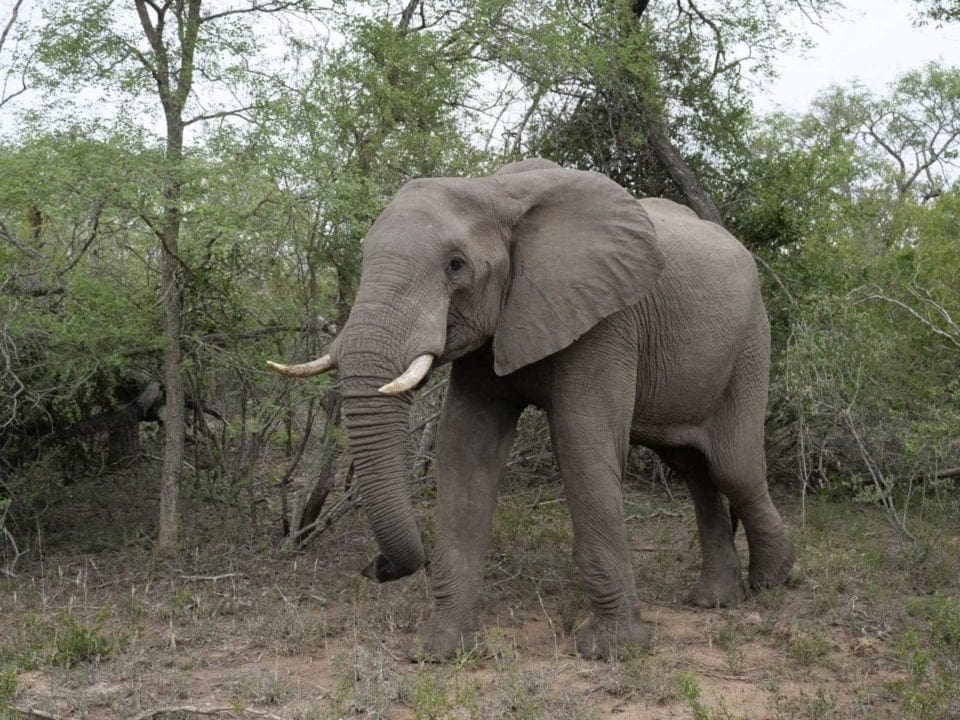
DSLR or Mirrorless Camera for Wildlife Photography?
A few years ago, the best cameras for wildlife photography were all DSLRs. Pretty much all professional wildlife photographers used DSLRs. However, mirrorless camera technology has come a long way since then and we’re seeing more and more enthusiasts and professionals switch to mirrorless cameras.
And while a larger camera balances a long lens better than a small one, if you’re walking a long way with your kit, you’re likely to want to shed a bit of weight from your bag if you can. Plus, a well-shaped grip and can do some way to making up for lower camera weight when you’re shooting.
Modern mirrorless cameras also have excellent electronic viewfinders that allow you to preview the impact of the camera settings that you have selected. You also get the benefit of features such as focusing peaking, zebras (highlight alerts) and live histograms, helping to keep you more informed about what you’re capturing.
Of course, there are still some who prefer a DSLR’s optical viewfinder for its completely natural view with zero lag, but an increasing number of photographers are seeing the advantage of electronic viewfinders.
Mirrorless cameras also offer a few advantages for autofocusing. Their tracking AF, for example, can be very useful with moving subjects. And now, with the advent of Animal-detection AF and Animal Eye AF, it’s becoming easier to ensure that the most important part of your subject is sharp.
One issue that has held some wildlife photographers back from switching to a mirrorless camera is the fear that there aren’t many compatible telephoto lenses. That is becoming less of an issue and manufacturers like Nikon and Canon offer adapters that enable their DSLR lenses to function well on their mirrorless cameras.
Read our guide to the best cameras with Eye AF, or check out our guides to the best DSLRs and best mirrorless cameras for more information.
Best camera settings for wildlife photography
The best camera settings for wildlife photography, of course, depend on the subject; however, in most cases you’ll want a fast shutter speed to freeze animals’ quick movements. You’ll also likely want to be using your camera’s continuous shooting mode. You’ll also want to use your camera’s Manual or Shutter Priority modes. Your aperture setting in wildlife photography isn’t as important as it is in, say, landscape photography. But the general rule of thumb is that you should get the animal sharp from front to back – to this end we like to use an aperture of f/8. If you’re shooting in low light, you can compromise a bit on your aperture or ISO settings. Our suggested settings would be:
- Exposure mode: Manual or Shutter Priority
- Drive mode: Continuous shooting
- Shutter speed: 1/1000sec or higher for moving animals; 1/2000sec or higher for birds in flight
- Aperture: f/8
- ISO: Lowest available at the shutter speed you need
- Focus mode: Continuous AF (unless your subject is stationary)
Remember, these wildlife camera settings are just a starting point. Every combination of subject, setting and light is different, and you’ll also have your own creative spin you’ll want to put on a scene. But these camera settings should get you roughly to where you want to be, and you can fine tune from there.
Best Cameras for Wildlife Photography
The case for DSLRs as the camera for wildlife photographers is less clear-cut than it was a few years back and now there are also some mirrorless cameras that make a great choice for wildlife photography. Let’s take a look at our top picks of both camera types. For a deeper dive into the many different camera types and features available, check out our range of camera buying guides.
Sony A1
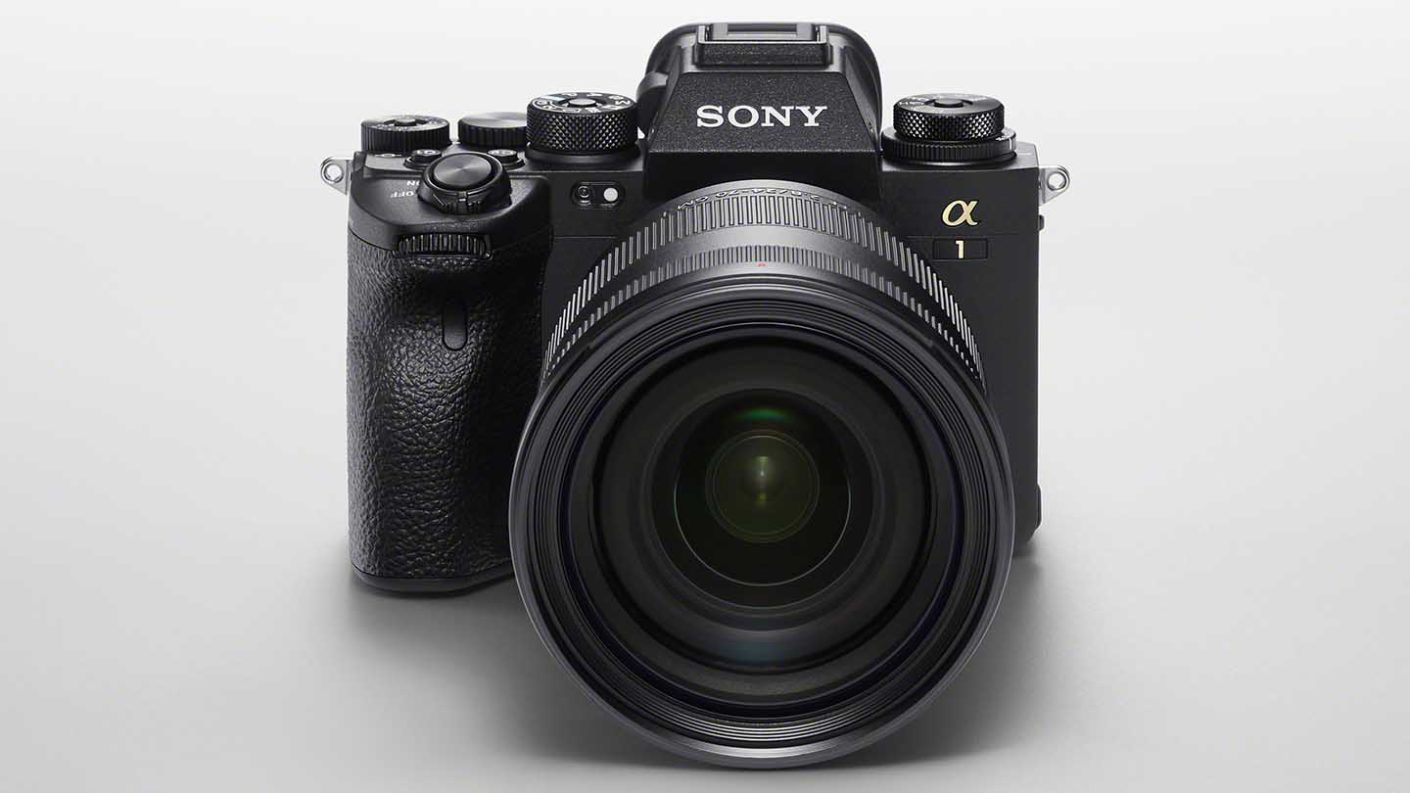
Specification
- Camera type: Full-frame mirrorless
- Announced: 26th January 2021
- Sensor: 50.1Mp full frame (35.9 x 24.0mm), Exmor RS CMOS sensor
- Lens mount: FE
- Sensitivity range: Stills: ISO 100-32000 (expandable to ISO 50 to ISO 102400) Video: ISO ISO 100-32000 (expandable to ISO 100-12800)
- Still Image format: Jpeg, HEIF, raw (Sony ARW 4.0)
- Video format & compression: XAVC S: MPEG-4 AVC/H.264, XAVC HS: MPEG-H HEVC/H.265
- 8K Video (XAVC HS): 7680 x 4320 (4:2:0, 10bit, NTSC) (Approx.): 30p(400Mbps / 200 Mbps), 24p(400Mbps / 200 Mbps), 7680 x 4320 (4:2:0, 10bit, PAL) (Approx.): 25p(400Mbps / 200 Mbps)
- 4K Video (XAVC HS): 3840 x 2160 (4:2:0, 10bit, NTSC) (Approx.): 120p (200Mbps), 60p (150Mbps / 75Mbps / 45Mbps), 24p (100Mbps / 50Mbps / 30Mbps); 3840 x 2160 (4:2:0, 10bit, PAL) (Approx.): 100p (200Mbps), 50p (150Mbps / 75Mbps / 45Mbps); 3840 x 2160 (4:2:2, 10bit, NTSC) (Approx.): 120p (280Mbps), 60p (200Mbps / 100Mbps), 24p (100Mbps / 50Mbps); 3840 x 2160 (4:2:2, 10bit, PAL) (Approx.): 100p (280Mbps), 50p (200Mbps / 100Mbps)
- 4K Video (XAVC S): 3840 x 2160 (4:2:0, 8bit, NTSC) (Approx.): 120p (200Mbps), 60p (150Mbps), 30p (100Mbps / 60Mbps), 24p (100Mbps / 60Mbps); 3840 x 2160 (4:2:0, 8bit, PAL) (Approx.): 100p (200Mbps), 50p (150Mbps), 25p (100Mbps / 60Mbps); 3840 x 2160 (4:2:2, 10bit, NTSC) (Approx.): 120p (280Mbps), 60p (200Mbps), 30p (140Mbps), 24p (100Mbps); 3840 x 2160 (4:2:2, 10bit, PAL) (Approx.): 100p (280Mbps), 50p (200Mbps), 25p (140Mbps)
- 4K Video (XAVC S-I): 3840 x 2160 (4:2:2, 10bit, NTSC) (Approx.): 60p (600Mbps), 30p (300Mbps), 24p (240Mbps); 3840 x 2160 (4:2:2, 10bit, PAL) (Approx.): 50p (500Mbps), 25p (250Mbps)
- Movie functions: Audio Level Display, Audio Rec Level, PAL/NTSC Selector, Proxy Recording (1280 x 720 (6Mbps), 1920 x 1080(9Mbps), 1920 x 1080(16Mbps)), TC/UB, Auto Slow Shutter, Gamma Disp. Assist, raw output(HDMI)
- Autofocus system: Hybrid AF with 759 phase detection points and 425 contrast detection points, Still images: Human (Right/Left Eye Select) / Animal (Right/Left Eye Select) / Bird, Movie: Human (Right/Left Eye Select), sensitive down to -4EV
- Maximum continuous shooting rate: Mechanical shutter: 10fps, Electronic shutter 30fps
- Viewfinder: 0.64-inch 9,437,184-dot EVF with 100% coverage and up to 0.9x magnification. It also offers 0.90x viewfinder magnification, 41° diagonal field of view with 25mm-high eyepoint
- Screen: 3-inch 1,440,000-dot tilting touchscreen
- Stills shutter speed range: Mechanical shutter: 1/8000-30sec plus Bulb, Electronic shutter: 1/32000-30sec plus Bulb
- Max flash sync speed (full-frame): Mechanical shutter: 1/400 sec, Electronic shutter: 1/200 sec
- Image stabilisation: 5-axis giving up to 5.5EV compensation
- Storage: Dual SD/SDHC/SDXC (UHS-I/II) & CFexpress Type A slots
- Connection ports: Sync, 3.5mm headphone, 3.5mm mic, LAN
- Battery: NP-FZ100 rechargeable Li-ion battery giving 400 shots with the viewfinder or 530 with the screen
- Dimensions (WxHxD): 128.9 x 96.9 x 80.8mm / 5 1/8 x 3 7/8 x 3 1/4 inches
- Weight (including battery & memory card): 737g / 1 lb 10.0 oz
Thanks to its incredible autofocus system which features subject recognition and Real-time Eye AF for birds as well as animals and humans, the Sony Alpha A1 makes a great camera for photographing wildlife if money is no object.
Also, as it has a 50.1Mp full-frame sensor, the low ISO images it produces can withstand a hefty degree of cropping if you can’t get quite close enough to the subject.
Provided that you don’t mind shooting Jpegs or compressed raw files, the Sony A1 can shoot at up to 30fps and its buffer allows for sequences of up to 155 full-frame compressed raw files or 165 full-frame Jpegs to be shot at that blistering pace. If you’re photographing a gentle grooming session around a badger set, 30fps is overkill, but if you’re aiming to capture a cheetah going in for the kill, that frame rate could make a significant difference.
If you want to capture uncompressed raw files, the Sony A1 can still shoot at up to 20fps. Again, that’s probably more than you need around a badger set, but it’s great for fast action and there are slower rates available as well.
The Sony A 1 has a 9.44 million dot OLED Quad-XGA electronic viewfinder, with a refresh rate of up to 240 fps, ensuring no blackout, delivering the highest resolution in its class. In addition, there’s a 3-inch 1,440,000-dot tilting touchscreen that features the revised menu arrangement and more extensive touch-control that was first seen in the Sony A7S III.
You can order the Sony A1 from Wex Photo Video and Park Cameras in the UK and Adorama or B&H Photo Video in the USA. You can also find the latest deals on Sony A1 kits and lenses at Amazon UK and Amazon US.
£6500
$6500For
- Excellent combination of speed and resolution
- Great range of video features including 8K video
- Superb electronic viewfinder
Against
- It takes a while to figure out the optimum settings
- Underwhelming screen specification
- Manual switching between the Eye AF subjects
Canon EOS R6

Specification
- Camera Type: Mirrorless
- Announced: 9th July 2020
- Sensor: 20Mp Full-frame Dual Pixel CMOS AF II
- Processor: Digic X
- Lens mount: RF
- Sensitivity range: Stills: ISO 100-102,400 expandable to ISO 50-204,800, Movies: ISO 100-6,400, expandable to ISO 204,800
- File formats: Raw + Jpeg/HEIF, MP4
- Maximum continuous shooting rate: Mechanical shutter: 12fps, Electronic shutter: 20fps
- Maximum video resolution: 4K video at up to 60fps, Full HD at up to 120fps. 4K video crop: 1.07x at 25p (1.19x with the Digital IS on), 1.52x at 60p
- Autofocus system: Dual Pixel CMOS AF II phase detection with 6,072 points in stills and 4968 points in movie mode
- Viewfinder: 0.5-inch 3.69million-dot OLED electronic viewfinder with 120fps refresh rate
- Screen: 3-inch 1.62-million dot vari-angle touchscreen
- Autofocus: Dual Pixel CMOS AF II with Advanced Animal AF (recognising dogs, cats and birds) supported in all video modes with 100% coverage and up to 1053 'AF segments'
- Stabilisation: In-body image stabilisation (IBIS) that works with lens IS and enables up to 8-stops of shutter speed compensation
- Storage: Dual slots, 2x SDXC UHS-II
- Dimensions: 138.4 x 97.5 x 88.4mm
- Weight: 598g / 680 g with card and battery
Canon may have attracted some unwanted attention because of the heat that the EOS R5 and EOS R6 generate when recording video but it really should get some serious plaudits for their incredible autofocus systems. The full-frame 20Mp Canon EOS R6’s 6,072-point phase detection AF system, which has face, eye and animal tracking is insanely good even when shooting at 12fps with the mechanical shutter or 20fps with the electronic shutter. It can spot and focus on eyes when they incredibly small in the frame and keep them sharp. It’s a game-changer for wildlife photography.
Further good news is that the Canon R6 inherits similar low-light capability to the EOS-1D X Mark III and has a native sensitivity range of ISO 100-102,400. I recommend sticking to ISO 51,200 or lower if you can though.
Find the latest deals on the Canon EOS R6 at Amazon UK and Amazon US.
£2500
€2899.99For
- Similar 20Mp full-frame sensor to the Canon EOS 1D X Mark III
- 12fps/20fps continuous shooting
- Superb autofocus system
Against
- Slight crop in 4K video mode
- 6Mp lower resolution than the Canon EOS 6D Mark II
- Serious heat generation issues with 4K video
Olympus OM-D E-M1X
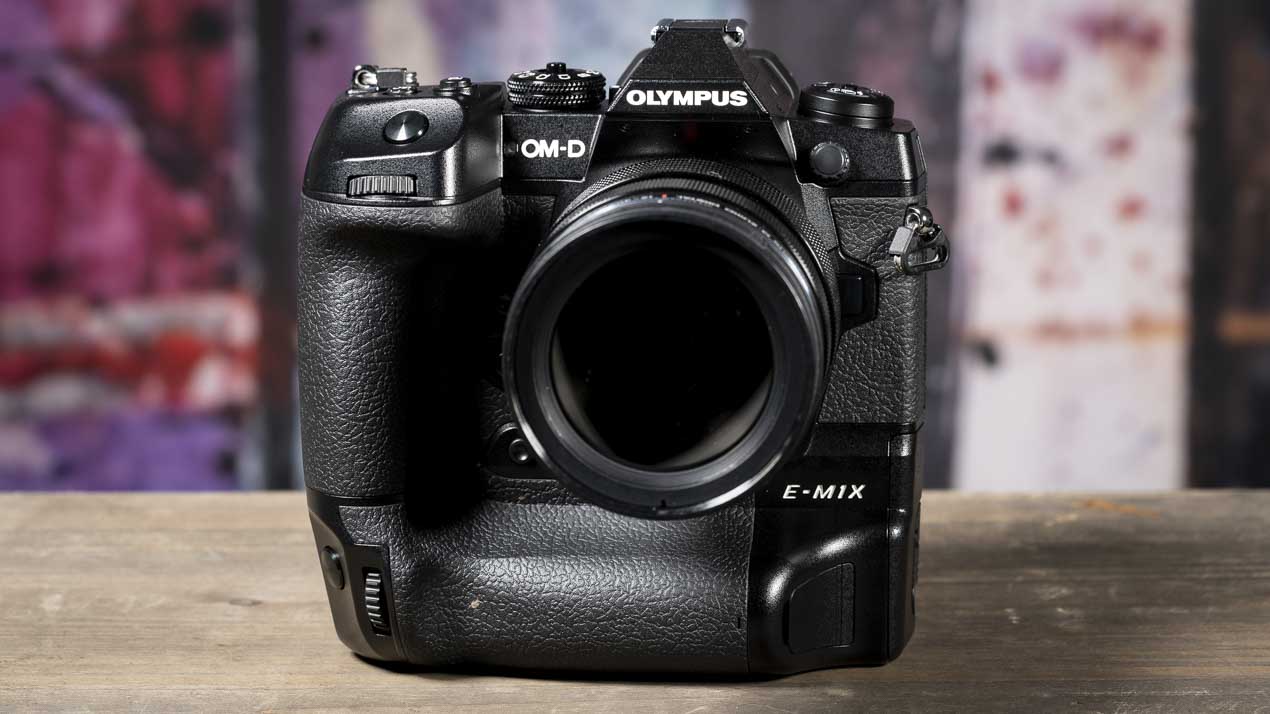
Specification
- Camera type: Mirrorless
- Sensor: 20.4Mp Four Thirds Type (17.3 x 13.0mm) CMOS
- Lens mount: Micro Four Thirds
- Sensitivity range: ISO 64-25,600
- Processing engine: 2x TruePic VIII
- Autofocus system: Hybrid with 121 cross-type points (800 in magnified view)
- Max continuous shooting rate: 18fps with AF tracking, 60fps with AF locked on first frame with electronic shutter
- Pro Capture High Mode: 60fps
- Pro Capture Low Mode: 18fps
- Burst Mode in S-AF: 15fps for 143 raw files
- Burst Mode in C-AF: 10fps for 283 raw files
- Max video resolution: 4K (4096 x 2160) at 24p
- Viewfinder: Electronic with 2,360,000 dots
- Screen: Touch-sensitive vari-angle 3-inch LCD with 1,037,000 dots
- Storage: 2x SD/SDHC/SDXC (UHS-II)
- Dimensions (WxHxD): 144.4 x 146.8 x 75.4mm
- Weight: 849g (body only), 997g (including 2 batteries and memory cards)
While the Olympus OM-D E-M1 II is very capable, the Olympus OM-D E-M1X is even better-suited for wildlife photographers.
It has the same 20.4Mp Four Thirds-type sensor as the E-M1 II, but it’s joined by two Truepic VIII processing engines to boost performance.
The AF system has also been reworked and is claimed to operate at down to -6EV. In addition, there’s a intelligent subject detection mode. When this is activated the camera can detect and focus on specific subjects automatically. Initially, this is limited to Motorsports, Airplanes and Trains, but a firmware update that arrives on 3rd December 2020 will add bird-detection AF. If that’s anywhere near as good as the original system, it’s going to be amazing.
In the standard sequential shooting mode, the maximum shooting rate with continuous autofocusing is 10fps for up to 283 raw files.
However, there’s also Olympus’s Pro Capture mode. In its Low setting this enables 18fps shooting with continuous focusing. It records 35 images immediately before the shutter button is press and 100 from immediately after.
Although Micro Four Thirds lenses are smaller and lighter than their full-frame counterparts, Olympus has built the E-M1X to work well with long lenses. As such, it has two hefty grips, one for shooting in landscape orientation and the other for portrait orientation. It’s also dust-proof, splash-proof and freezeproof (-10°C) to more than IPX standard.
Find the latest deals on the Olympus OM-D E-M1X at Amazon UK and Amazon US.
£2199
$1999For
- One of the fastest cameras you can buy
- Pro Capture Mode offers lots of flexibility
- High Res Shot mode is very impressive
Against
- It's very big and heavy for a Micro Four Thirds camera
- Four Thirds sensor
- Need more smaller, lighter, more affordable long telephoto lenses
Sony A7 IV
Specification
- Camera type: Full-frame mirrorless
- Announced: 21st October 2021
- Sensor: 33Mp full frame (35.9 x 24.0mm) BSI Exmor R CMOS sensor
- Lens mount: FE
- Sensitivity range: Stills: ISO 100-51,200 (expandable to ISO 50 to ISO 204,800), Video: ISO ISO 100-51,200 (expandable to ISO 100-102,400)
- Still Image format: Jpeg, HEIF, raw (Sony ARW 4.0)
- Video format & compression: XAVC S: MPEG-4 AVC/H.264, XAVC HS: MPEG-H HEVC/H.265
- 4K Video (XAVC HS): 3840 x 2160 (4:2:0, 10bit, NTSC): 60p (150 Mbps / 75 Mbps / 45 Mbps), 24p (100 Mbps / 50 Mbps / 30 Mbps), 3840 x 2160 (4:2:0, 10bit, PAL): 50p (150 Mbps / 75 Mbps / 45 Mbps), 3840 x 2160 (4:2:2, 10bit, NTSC): 60p (200 Mbps / 100 Mbps), 24p (100 Mbps / 50 Mbps), 3840 x 2160 (4:2:2, 10bit, PAL): 50p (200 Mbps / 100 Mbps)
- 4K Video (XAVC S): 3840 x 2160 (4:2:0, 8bit, NTSC): 60p (150 Mbps), 30p (100 Mbps / 60 Mbps), 24p (100 Mbps / 60 Mbps), 3840 x 2160 (4:2:0, 8bit, PAL): 50p (150 Mbps)5, 25p (100 Mbps / 60 Mbps), 3840 x 2160 (4:2:2, 10bit, NTSC): 60p (200 Mbps)56, 30p (140 Mbps), 24p (100 Mbps), 3840 x 2160 (4:2:2, 10bit, PAL): 50p (200 Mbps)5, 25p (140 Mbps)
- 4K Video (XAVC S-I): 3840 x 2160 (4:2:2, 10bit, NTSC): 60p (600 Mbps)56, 30p (300 Mbps)6, 24p (240 Mbps), 3840 x 2160 (4:2:2, 10bit, PAL): 50p (500 Mbps)5, 25p (250 Mbps)
- Movie functions: Audio Level Display, Audio Rec Level, PAL/NTSC Selector, Proxy Recording (1280 x 720 (Approx. 6 Mbps), 1920 x 1080 (Approx. 9 Mbps), 1920 x 1080 (Approx. 16 Mbps)), TC/UB, Auto Slow Shutter, Gamma Disp. Assist
- Autofocus system: Hybrid AF with 759 phase detection points and 425 contrast detection points, Still images: Human (Right/Left Eye Select) / Animal (Right/Left Eye Select) / Bird, Movie: Human (Right/Left Eye Select), sensitive down to -4EV
- Maximum continuous shooting rate: 10fps
- Viewfinder: 0.5-inch 3,686,400-dot EVF with 100% coverage and up to 0.78x magnification
- Screen: 3-inch 1,036,800-dot vari-angletouchscreen
- Image stabilisation: 5-axis giving up to 5.5EV compensation
- Storage: Dual: 1: SD/SDHC/SDXC (UHS-I/II) & CFexpress Type A slot, 2: SD/SDHC/SDXC (UHS-I/II)
- Battery: NP-FZ100 rechargeable Li-ion battery giving 610 images with the screen
- Dimensions (WxHxD): 131.3 x 96.4 x 79.8mm / 5 1/4 x 3 7/8 x 3 1/4 inches
- Weight (including battery & memory card): 658g / 1 lb 7.3 oz
Like all recent Sony mirrorless cameras, the Sony A7 IV has a huge list of features with many making a step up on what is offered by the A7III. The most obvious of these is the move from a 24Mp sensor to a 33Mp back-illuminated Exmoor R CMOS sensor.
As the A7 IV makes a 37.5% increase in pixel count on the A7 III, it’s not surprising that Sony has paired the sensor with an upgraded processor. In this case, it’s the same Bionz XR processing engine as is seen in the Sony A7S III and A1.
The A7 IV’s maximum continuous shooting rate is 10fps when shooting compressed raw images. The A7 IV can also shoot continuously for up to 828 images when shooting uncompressed raw and Jpegs simultaneously when using a CFexpress card.
Although the A7 IV doesn’t have the same sensor as the flagship Sony A1, it has the same autofocus (AF) system and there are 759 phase detection AF points. It’s also possible to set Eye AF to detect Human, Animal or Bird eyes and there’s Real-time tracking. What’s more, the Eye AF (for all three subject types) and Real-time tracking work in both stills and video mode.
Find the latest deals on the Sony A7 IV at Amazon UK and Amazon US.
£2400
$2498For
- Good combination of speed and resolution
- Vari-angle touchscreen
- Excellent AF system
Against
- CFexpress Type A card required to get the full feature range
- Video options could be clearer
- Super 35 crop for 4K video at 60p
Panasonic Lumix G9

Specification
- Camera type: Micro Four Thirds mirrorless camera
- Sensor: 20.3 million Four Thirds type (17.3 x 13mm)
- Burst Mode: 20fps with AF-C, 60fps with AF-S
- Autofocus: 225-point Contrast detection
- Video: 4K (3840 x 2160) at 60p, 50p, 30p, 25p, 24p with no cropping
- Dimensions (W x H x D) : 136.9 x 97.3 x 91.6 mm / 5.39 x 3.83 x 3.61 inch (excluding protrusions)
- Weight: 658g / 1.45lb including 1 SD card x and battery, 586g / 1.30lb body only
The Panasonic Lumix G9 is Panasonic’s flagship Micro Four Thirds stills-camera and it sits alongside the GH5 at the top of the company’s G-series interchangeable lens camera line-up.
Like the GH5, the G9 is a mirrorless camera with a Four Thirds Type sensor and a Micro Four Thirds lens mount. Panasonic says the camera is aimed at enthusiast outdoor and wildlife photographers.
While the GH5 is largely known as a video camera, it’s also a very capable stills camera. The fact that the Panasonic Lumix G9 has the same sensor and processing engine, but has been tuned for stills rather than video is, therefore, good news for photographers. It also feels like a high-quality camera, being light yet sturdy with a good-sized grip while the touch-control is accompanied by a healthy array of physical controls.
The G9 has the same 20.3Mp sensor and Venus 10 processing engine as the GH5. However, Panasonic tells us the G9’s sensor and processor have been tuned very differently to suit the G9’s stills-shooting focus. To boost detail resolution, the sensor also has no optical low-pass filter.
While 20Mp images will suffice for many situations, the G9 also has a High Resolution mode that enables 80-megapixel images to be created in JPEG and raw formats in-camera. In this mode the camera takes a sequence of 8 images in quick succession, shifting the sensor a little between each shot. These images are then merged to create a single larger image with more detail.
This is a tripod-only mode and it takes approximately 4 seconds to process the image – that’s about half the time that the Olympus OM-D E-M1 Mark II takes in its Pixel Shift mode.
Panasonic has also given the G9 a very high-quality electronic viewfinder, an articulating touch-screen and a blistering continuous shooting rate. Further good news is that the AF system can keep up with the frame rate so you can shoot sport and action.
£1499
$1698 / €1729For
- Compact weather-sealed body
- Stabilisation system rated at 6.5EV
- High-quality EVF and screen
Against
- Sub-full-frame sensor
- Awkwardly positioned joystick controller
- 400-shot battery life in standard mode
Sony A9 II
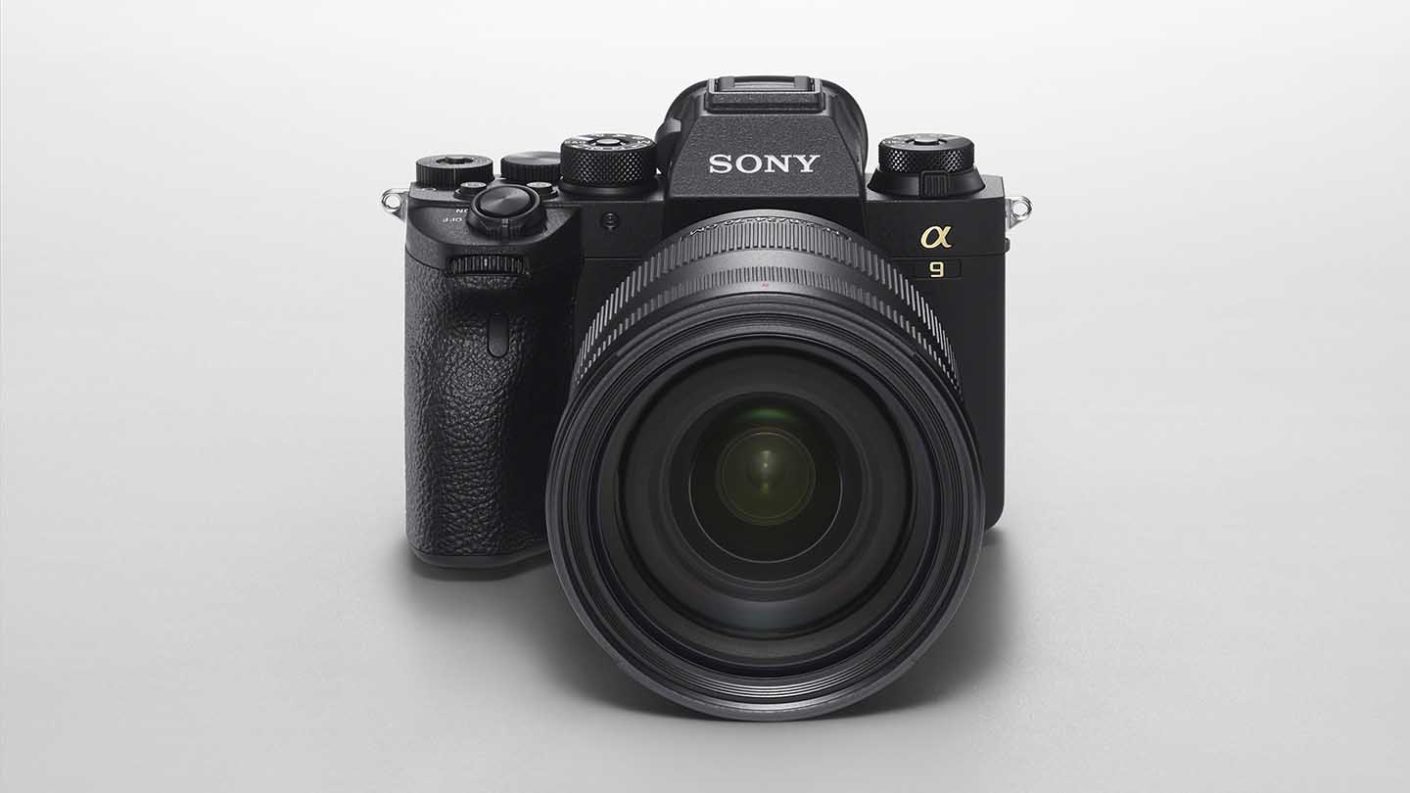
Specification
- Camera type: Full-frame mirrorless
- Sensor: Stacked 24-megapixel full-frame sensor
- Lens mount: FE
- Autofocus: 693-point phase detection AF system, with 425 contrast AF points
- Maximum continuous shooting rate: 20fps
- Maximum video resolution: 4K
- Viewfinder: 0.5-inch electronic viewfinder, 3,6m-dot, 100% coverage
- Screen: 3-inch, 1.4m-dot, tilting, touch-sensitive
- Connectivity: Built-in 1000BASE-T Ethernet terminal
The Sony A9 II has the same stacked 24-megapixel full-frame sensor as its predecessor, the Sony A9. However, it’s paired with a more recent Bionz X processor.
The A9 II also retains the A9’s much-lauded 693-point phase detection AF system, which also includes 425 contrast AF points. It also incorporates Sony’s Real Time Eye-AF, Real Time Tracking and Fast Hybrid Focusing modes. And it can’t fail to impress.
Sony also improved the A9 II’s weatherproofing including enhancing the areas around the ports, battery and memory card doors.
A key attraction of the Sony A9 II for wildlife photographers is its ability to shoot at up to 20fps completely silently.
Find the latest deals on the Sony A9 II at Amazon UK and Amazon US.
£4800
$4500For
- Built for speed
- Outstanding AF
- Enhanced design
Against
- Menu system convoluted
- Quite expensive
Canon EOS-1D X Mark III
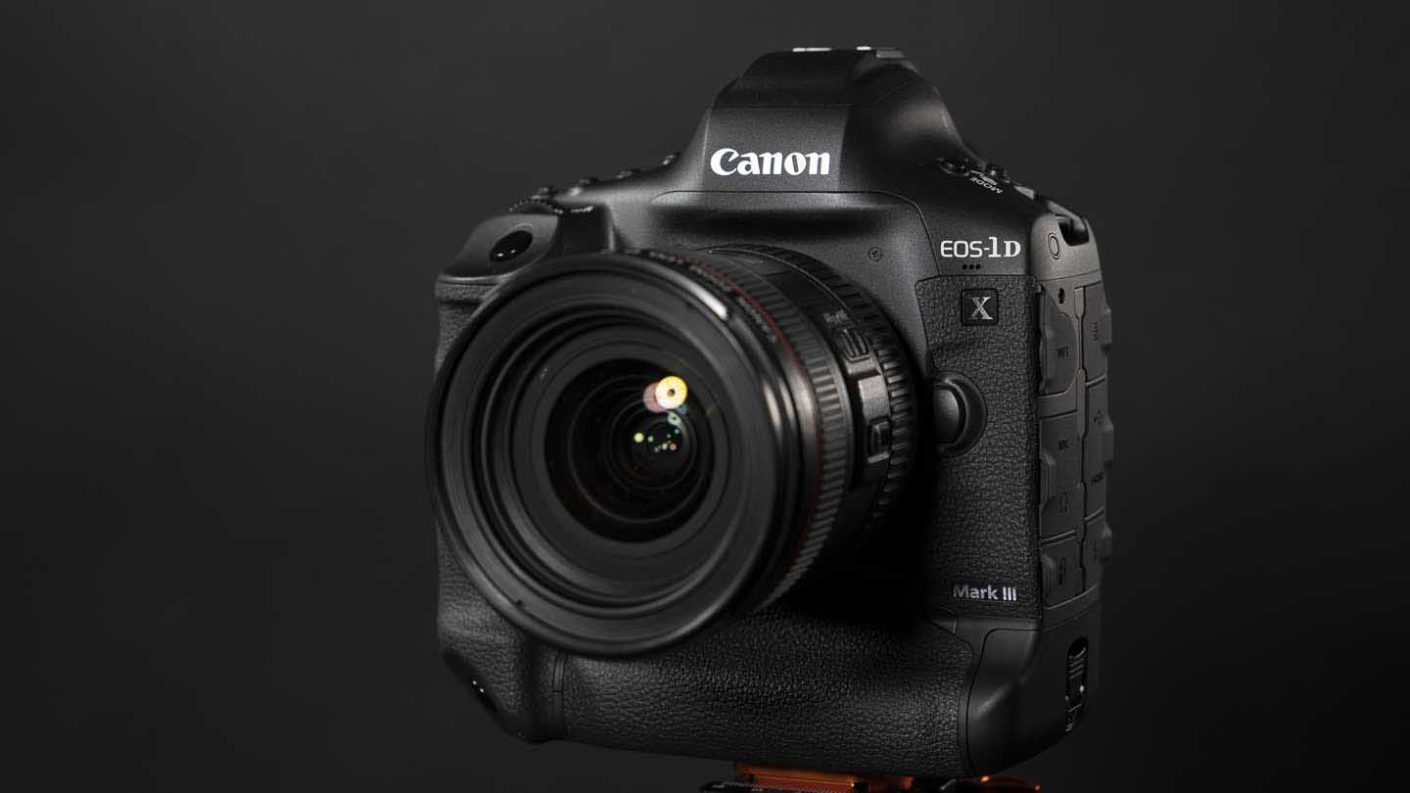
Specification
- Camera type: DSLR
- Announced: 7th January 2020
- Sensor: Full-frame (24x36mm) 20.1Mp CMOS
- Lens mount: Canon EF
- Processing engine: Digic X
- Sensitivity range: Stills: 100-102400, expandable to ISO 50-819,200, Video: ISO 100-25600, expandable to ISO 100-204,800
- Autofocus system: Viewfinder: phase detection with 191 points, 155 cross-type AF at f/4 including 1 dual cross type at f/2.8, Live View: Dual Pixel CMOS AF with Face+Tracking and 3,869 points
- Max continuous shooting rate: Viewfinder: 16ps, Live View: 20 fps with mirror locked up with exposure and AF tracking
- Max video quality: 4K raw (5496x2904) at 23.98, 24, 25, 29.97, 50, 59.94fps, 4K DCI (17:9) 4096x2160 at 23.98, 24, 25, 29.97, 50, 59.94fps intra or inter frame
- Viewfinder: Optical, pentaprism type with 100% coverage, 0.76x magnification and 20mm eyepoint
- Screen: Fixed 3.2-inch / 8.01 cm TFT with 2,100,000 dots
- Storage: Dual CFexpress 1.0 Type B
- Dimensions (W x H x D): 158 x 167.6 x 82.6mm
- Weight: 1250g body only
Canon’s flagship DSLR, the EOS-1D X Mark III is built to survive serious use and it can shoot at up to 16fps when the viewfinder is in use or 20fps in live view mode with mirror lock- up. Whichever rate you opt for, there’s full exposure and AF tracking functionality.
The Canon 1D X Mark III also has two super AF systems, one with 191 points for use with the viewfinder and the other with 3,869 points for use in live view mode. Both get fast-moving subjects sharp and keeps them in focus.
Provided you stick to ISO 51,200 or lower, you’ll be rewarded with excellent results. The level of detail is good, colours are vibrant and the exposure metering system is reliable.
Find the latest deals on the Canon EOS-1D X Mark III at Amazon UK and Amazon US.
£6499
$6499For
- 16/20fps continuous shooting with a massive burst depth
- Excellent AF system
- Great new Smart Controllers
Against
- Huge price
- Fixed screen is frustrating in Live View and video mode
- Big and heavy
Nikon D850

Specification
- Camera type: Full-frame (FX) DSLR
- Announced: 24th August 2017
- Lens mount: Nikon F
- Sensor: 45.7Mp full-frame (35.9 x 23.9mm) backside-illuminated CMOS
- Maximum continuous shooting rate: 7fps as standard, 9fps with the optional MB-D18 Multi-Power Battery Pack for up to 51 14-bit lossless compressed raw files or 170 12-bit lossless compressed raw files
- Autofocus system: Viewfinder: Multi-CAM 20K autofocus sensor 153 focus points (including 99 cross-type sensors and 15 sensors that support f/8), of which 55 (35 cross-type sensors and 9 f/8 sensors) are available for selection, Live view: Contrast detection
- Viewfinder: Optical pentaprism type
- Screen: Tilting, touch-sensitive 3.2-inch TFT LCD with 2,359,000 dots
- Dimensions: 146×124×78.5mm / 5.8×4.9×3.1inches
- Weight: 1,005g / 2lb 3.5oz with battery and XQD memory card but without body cap, 915g /2lb 0.3oz camera body only
The Nikon D850 is arguably the best DSLR that has ever been made. It combines a 45.7Mp full-frame sensor with continuous shooting at up to 9fps with the optional MB-D18 Multi-Power Battery Pack. Even without the battery pack, it can shoot at 7fps and both rates can be maintained for up to 51 14-bit lossless compressed raw files or 170 12-bit lossless compressed raw files.
When the viewfinder is in action there’s also a superb 153-point AF system with 99 cross-type sensors and 15 sensors that support f/8).
As the D850 has a backside-illuminated sensor and the microlenses are gapless the pixels have the maximum opportunity to gather light. This and the Expeed 5 processing engine has enabled Nikon to give the camera a standard sensitivity range of ISO 64-25,600. There are also expansion settings that extend the range to the equivalent of ISO 32-102,400, but we recommend staying with the native range.
It’s proved an incredibly popular DSLR with photographers who appreciate its ability to combine a high pixel count with speed and excellent low-light performance.
Find the latest deals on the Nikon D850 at Amazon UK and Amazon US.
£3500
$3296.95Nikon D500
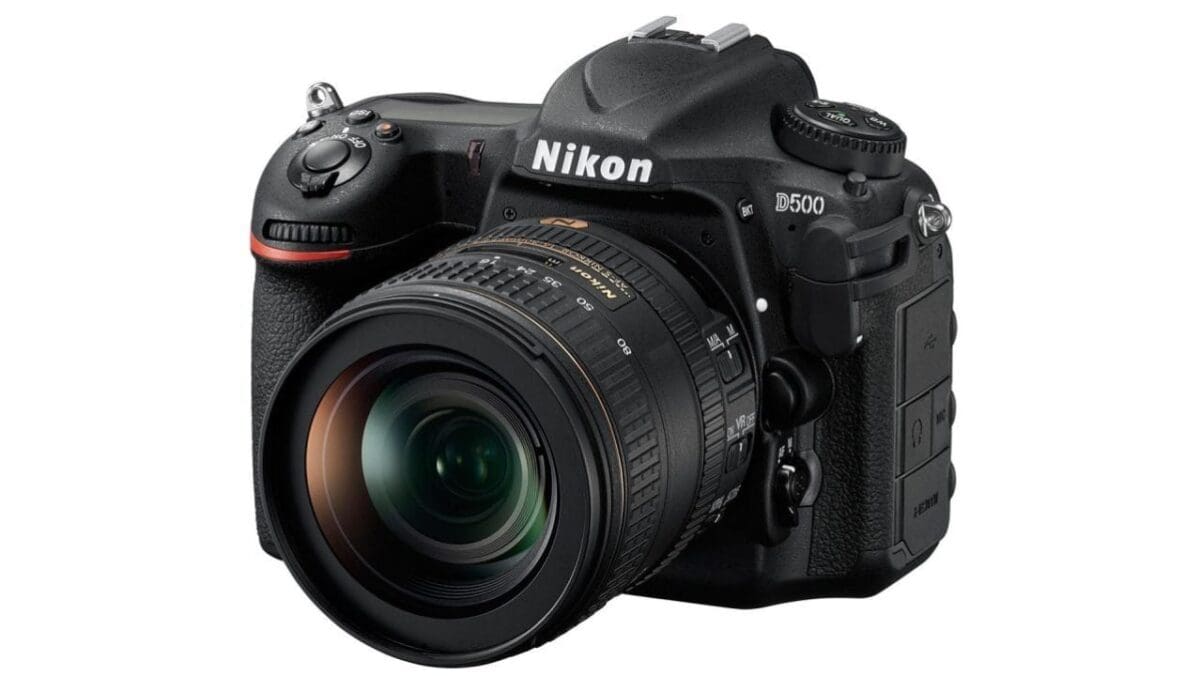
Specification
- Camera type: DSLR
- Announced: 5th January 2016
- Sensor: APS-C (23.5 x 15.7mm) 20.9Mp (5568 x 3712)
- Lens mount: Nikon F
- Processor: Expeed 5
- Sensitivity range: ISO 100-102,400 expandable to ISO 50-1,640,000
- Autofocus system: Viewfinder: 153-point with 99 cross-type Live View: contrast detection
- Max continuous shooting rate: 10fps
- Max video quality: 4K (3840 x 2160) at 30p, 35p, 24p
- Viewfinder: Optical using a pentaprism with 100% view
- Screen: 3.2-inch 2,359,000-dot TFT LCD touchscreen
- Storage: XQD and SD/SDHC/SDXC (UHS-II)
- Battery: EN-EL15b rechargeable Li-ion battery (supplied)
- Dimensions (W x H x D): 147x115x81mm /5.8x4.6x3.2 in
- Weight: 860g with battery and XQD card
Nikon introduced the D500, at the same time as the full-frame D5, as its flagship APS-C (DX) format DSLR. It also has the same sensor architecture and 153-point Multi-Cam 20K autofocus module as the D5, which means it’s extremely capable. The AF system particularly impresses, getting fast-moving subjects sharp (and tracking them) in very low light.
Also, thanks to the Expeed 5 processing engine, the D500 has a maximum continuous shooting rate of 10fps (frames per second), which gives it extra appeal to wildlife and sports photographers.
Another bonus for photographers who like shooting outdoors is that the D500 is weather-sealed to a high standard. There’s also an optional grip available to make it more comfortable to use with long lenses when shooting in portrait orientation.
While the D500 is capable of shooting 4K video, the screen is fixed and the Live View AF system relies on contrast detection, which means it’s not really the ideal choice of camera for shooting video.
However, the D500 produces high-quality stills with a good level of detail maintained all the up to around ISO 6400 and even images shot at ISO 12,800 look very good. This, combined with D500’s rugged build, excellent viewfinder-based AF system and fast-shooting capability, make it a popular choice for wildlife photographers.
Find the latest deals on the Nikon D500 at Amazon UK and Amazon US.
£1730
$1996.95For
- Same sensor design as the Nikon D5
- Same AF system as Nikon D5
- Dual card slots
Against
- Modest pixel count
- Poor Live View and video AF system
- Limited use of touch-screen
Nikon D780
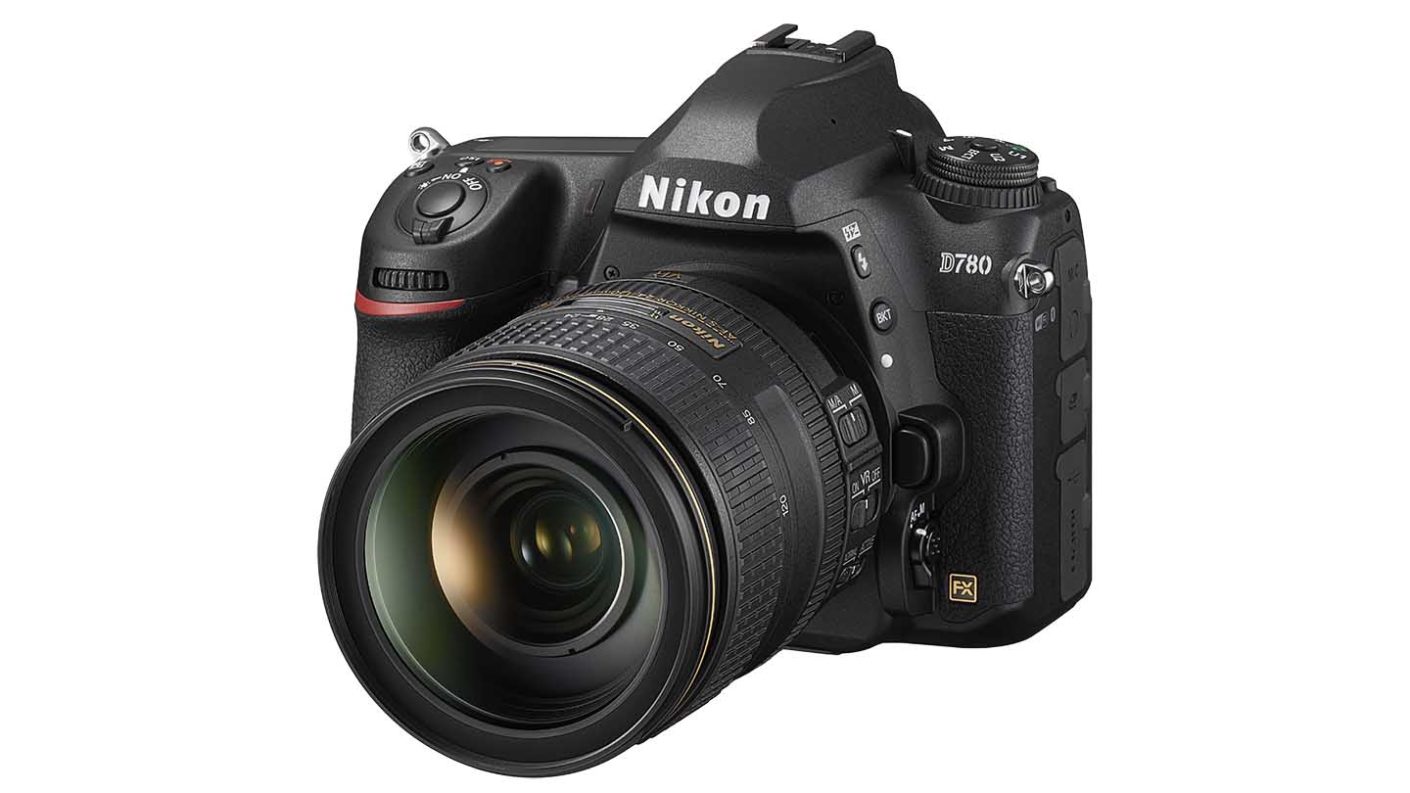
Specification
- Camera type: DSLR
- Announced: 7th January 2020
- Sensor: Full-frame (FX) 24.5Mp CMOS
- Lens mount: Nikon F
- Processor: Expeed 6
- Sensitivity range: ISO 100-51,200, expandable to 50-204,800
- Autofocus system: Viewfinder: 51-points with 15 cross-type, Live View: hybrid (phase and contrast detection) with 273 points and Eye detection
- Max continuous shooting rate: 7fps with AF/AE, 12fps in Silent Live View mode or 30fps at 8Mp and 120fps at 2Mp
- Max video quality: 4K at 30p/25p/24p
- Viewfinder: Optical using a pentaprism with 100% view
- Screen: 3.2-inch 2,359,000-dot tilting touchscreen
- Storage: 2x SD/SDHC/SDXC UHS-II
- Battery: EN-EL15b rechargeable Li-ion battery (supplied)
- Dimensions (W x H x D): 143.5 x 115.5 x 76mm / 5.7 x 4.6 x 3inches
- Weight: 755 g / 1 lb. 10.7 oz. body only, 840 g / 1 lb. 13.7 oz.,with battery and SD card but without body cap,
The D780 is the first DSLR from Nikon to benefit from the technology that it developed for the Z-series mirrorless cameras. That means that it has the best Live View AF of any Nikon DSLR, plus the the superb 51-point AF system for shooting with the viewfinder.
There’s also a standard maximum shooting rate of 7fps, but if you switch to silent shooting (in Live View mode using the electronic shutter), you can shoot at up to 12fps.
The 24.5Mp full-frame sensor has a native sensitivity range of ISO 100-51,200 and the results are excellent up to around ISO 25,600.
Find the latest deals on the Nikon D780 at Amazon UK and Amazon US.
£2199
$2696.95For
- Excellent Live View AF system
- Great battery life
- Dual UHS-II SD card slots
Against
- High launch price
- SLR design means the Live View is not visible in the viewfinder
- No joystick for speedy AF point selection when using the viewfinder
Canon EOS 5D Mark IV
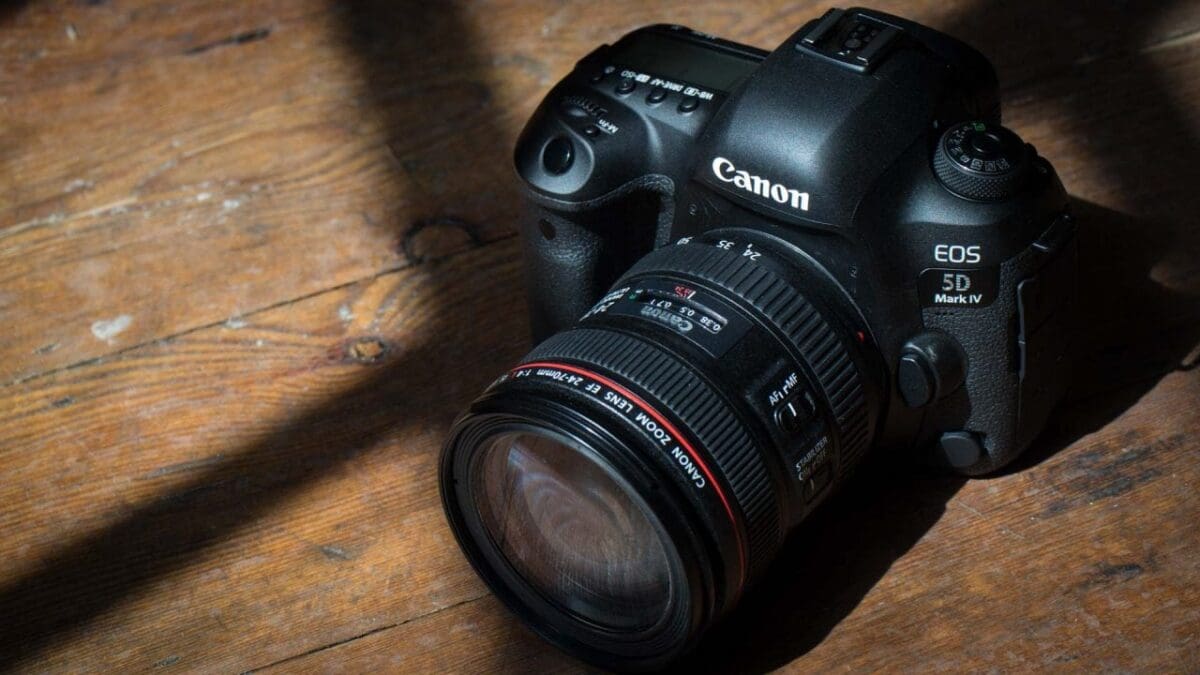
Specification
- Camera type: DSLR
- Announced: 25th August 2016
- Sensor: Full-frame (36 x 24mm) 30.4Mp CMOS
- Processor: Digic 6+
- Lens mount: Canon EF
- Autofocus system: Viewfinder: 61 points with a maximum of 41 cross-type points including 5 dual cross type at f/2.8 and 61 points with 21 cross-type points at f/8, Live View: Dial Pixel CMOS AF
- High-Speed Continuous Shooting Mode: 7fps
- Low-Speed Continuous Shooting Mode: 3fps
- Silent Continuous Shooting: Mirror raised slowly for less noise
- Maximum video resolution: 4K (17:9) 4096 x 2160 at 29.97, 25, 24, 23.98 fps
- Viewfinder: Pentaprism optical with 100% coverage
- Screen: 3.2-inch Clear View LCD II with 1,620,000 dots
- Storage: Dual: 1x CompactFlash and 1x SD/SDHC/SDXC
- Dimensions: 150.7 x 116.4 x 75.9mm
- Weight: 800g
It was launched in August 2016, so it’s getting on a bit, but the Canon EOS 5D Mark IV is a solid, dependable and popular camera amongst professional and enthusiast photographers in many genres – including wildlife photography.
It combines a full-frame 30.4Mp Dual Pixel CMOS sensor with dual processors
(Digic 6 and Digic 6+) to enable a sensitivity range of ISO 100-32,000, which can be expanded to ISO 50-102,400.
When images are composed in the viewfinder, there’s an excellent 61-point AF system with 41 cross type points including 5 dual cross type at f/8 and 21 cross-type at f/8, which is great for shooting with telephoto lenses combined with a telecom inverter for extra reach.
We’d recommend sticking to ISO 25,600 or lower, but the 5D Mark IV is capable of producing superb result.
Find the latest deals on the Canon EOS 5D Mark IV at Amazon UK and Amazon US.
£1799
$2499For
- 30Mp full-frame sensor
- ISO 100-32000 (expands to 50-102400)
Against
- Touchscreen is fixed
- 4K video for internal recording only
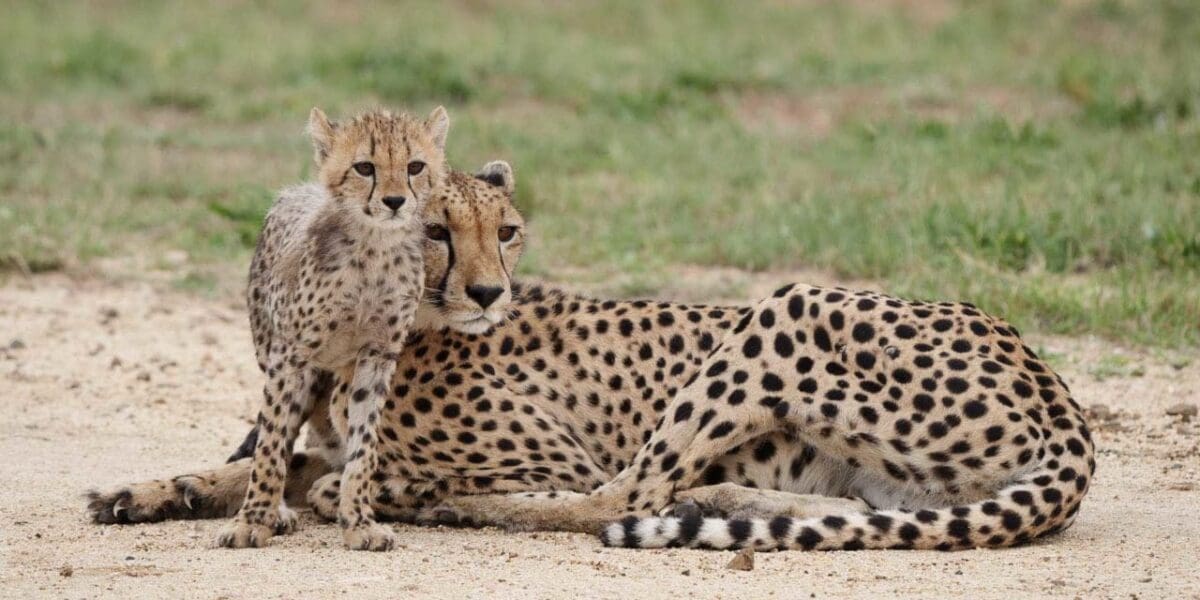



I see you didn’t mention the Nikon D500 in this article. Excellent autofocus performance, 10 fps shooting, 200+ raw file buffer, professional build, excellent image quality. Cheaper than any of these cameras and still a current model in the Nikon lineup.
I’m planning to add it Gary.
I read through all of this to get to the D500 review……
Comprehensive list of cameras. Should help me to make a decision, thanks
Which do you have your eye on?
The biggest issue with the Canon R6/R5 cameras is rolling shutter effect at the higher shutter speeds i use for birds in flight. They are not a good choice if that is your chosen subject.
Pentax K-3 Mk3?
Seems the AF has been sorted out. Eye detection and tracking is good. 26mp BSI sensor, weather sealed rugged body, dual card slots and the rest of it.
Only downside is the only new lens available that’s got the reach needed for wildlife is the D-FA 150-450 which can be had mint, used £1,100.
I think it’s still somewhere behind the other options in this list on the AF front.
It’s notable that the only decent mirrorless cameras for wildlife are the top of the range (£5,500 in the case of the Z9).
At a more budget-friendly end (£1,000), the best options by far are still DSLRs. For the same price, a D7500 is far superior to a Z5 and it has the advantage of the crop factor, in that a modest-priced 300/f4 + 1.4TC will give it 630mm efl. The larger pixels on the Z5 don’t make up for that. A great AF lens like a 70-200/f4 will also be more useful.
As someone on a budget, I don’t think mirrorless cameras are yet good enough for wildlife photography.